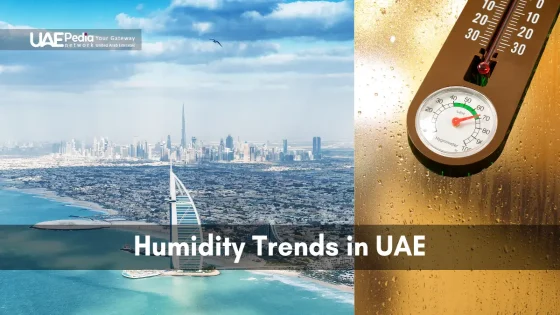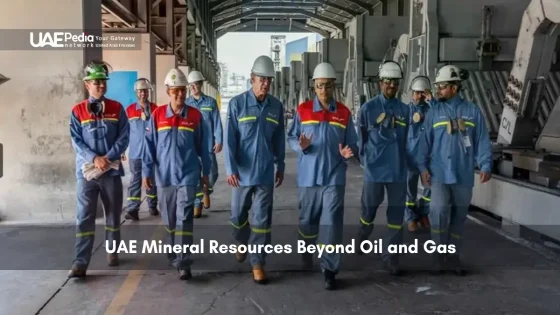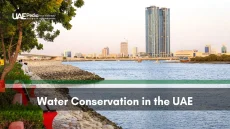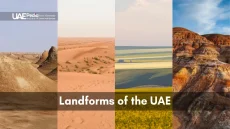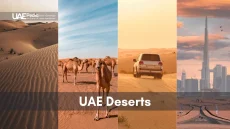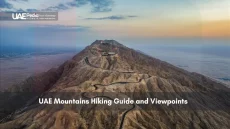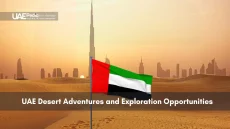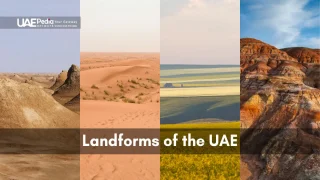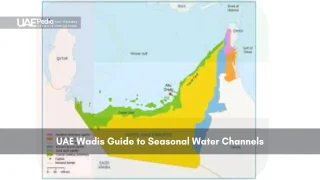What if we told you the country’s beaches are literally redrawing their own map? Before ambitious urban projects began reshaping shorelines, the United Arab Emirates’ natural coast stretched roughly 1,318 km – a distance that’s grown by nearly 20% through land reclamation. This evolving edge of desert meeting sea reveals much about the nation’s bold vision.
Stretching along the Arabian Peninsula, this federation of seven emirates blends ancient trade routes with futuristic cities. Its capital, Abu Dhabi, anchors a landscape where Arabic rhythms echo through spice-scented souks, while gleaming skyscrapers reflect Islamic architectural motifs. Water scarcity fuels innovation here, with desalination plants supporting both population growth and those iconic hotel fountains.
We’ll walk you through three layers of coastal magic:
- Nature’s blueprint: Original beaches, tidal flats, and wildlife habitats
- Human ingenuity: Palm-shaped islands, luxury resorts, and climate adaptation
- Cultural currents: How fishing traditions evolved into global trade hubs
From pearl diving heritage to oil’s transformative role, every grain of sand here tells a story. Ready to trace this dynamic shoreline with us?
Overview of the UAE’s Coastal Landscape
Ever wondered how a desert nation became a maritime powerhouse? The answer lies along its dynamic shores. Let’s unpack how geography, history, and human ambition shaped this corner of the Arabian Peninsula.
Geographical and Historical Context
Nestled where the Gulf of Oman meets the Persian Gulf, the United Arab Emirates occupies a strategic crossroads. For centuries, dhows carried pearls and spices from natural harbors—until land reclamation projects began transforming sandy stretches into global icons.
The desert climate here plays a delicate dance with the sea. Summers blaze hot, but coastal breezes offer relief—a balance of extremes that shaped both Bedouin traditions and modern desalination projects. Annual rainfall barely fills a teacup, making every drop of water precious.
Key Coastal Attractions and Features
Abu Dhabi’s skyline winks at traditional wind towers, while Dubai’s Palm Jumeirah redefines beachfront luxury. Beyond the glitter:
- Cultural anchors: Call to prayer echoes over fishing villages turned megaports
- Natural wonders: Mangrove forests shelter flamingos near urban sprawl
- Trade hubs: Jebel Ali Port handles cargo from 180+ countries
Arabic remains the official language, and Islamic traditions guide daily rhythms. Yet the population now includes over 200 nationalities—a mosaic reflected in spice souks and fusion eateries along the corniches.
Next time you stroll a Corniche walkway or snorkel coral reefs, remember—you’re tracing lines drawn by nature and reimagined by visionaries.
UAE Coastline Length: Insights and Developments
Picture this: desert winds sculpting shorelines while cranes lift palm-shaped islands from the sea. Since the 1990s, the nation’s original 1,318 km of natural beaches have grown by nearly 300 km through bold land reclamation projects. This isn’t just expansion—it’s a reimagining of what coastal living means in arid climates.
Blueprint to Bluewater
Dubai’s Palm Jumeirah didn’t just add 56 km of beaches—it sparked a global fascination with engineered coastlines. These projects serve dual purposes:
- Creating prime real estate for tourism and trade
- Protecting existing shores from rising sea levels
- Diversifying beyond oil into sustainable energy hubs
The economic ripple effect? Coastal developments now contribute 23% to the GDP, with ports like Jebel Ali handling 22.1 million shipping containers annually.
From Tides to Towers
Where pearl divers once waded through mangrove forests, glass skyscrapers now mirror cloudless skies. This transformation balances delicate ecosystems with urban sprawl—protected natural landforms coexist with artificial archipelagos. Challenges remain:
- Summer temperatures hitting 48°C (118°F) test cooling systems
- Desalination plants provide 90% of drinking water
- Coastal population centers grew 400% since 2000
Yet every project now includes sustainability benchmarks, proving that even in the desert, innovation blooms where waves meet sand.
Climate and Environmental Influences on the Coast
How does a desert nation keep its cool when the heat is on—literally and figuratively? The answer lies where golden sands meet turquoise waves, creating a stage for nature’s drama and human ingenuity. Let’s unpack how weather patterns and environmental shifts shape this dynamic region.
Desert Climate and Coastal Weather Patterns
Summer here isn’t just hot—it’s a full sensory experience. Temperatures often hit 48°C (118°F), while humidity levels near the shore can make the air feel like warm syrup. Winters offer relief, with mild 24°C (75°F) days perfect for beach strolls. Rainfall? A rare guest, averaging less than 120mm annually.
These extremes create unique coastal ecosystems. Mangrove forests thrive in salty shallows, their roots filtering seawater while sheltering flamingos and crabs. Humidity trends directly impact these habitats, with foggy mornings often giving way to shimmering heat mirages by noon.
Challenges of Rising Sea Levels and Sustainability
Imagine building cities in a place where the ocean inches closer each year. Desalination plants—providing 90% of drinking water—face saltwater intrusion risks. Power stations along the shore? They’re redesigning flood barriers while switching to solar energy.
| Challenge | Traditional Approach | Sustainable Innovation |
|---|---|---|
| Sea Level Rise | Concrete barriers | Artificial reefs & elevated structures |
| Water Scarcity | Groundwater extraction | Solar-powered desalination |
| Energy Demands | Natural gas plants | Floating wind farms & rooftop solar |
Urban planners now weave climate resilience into every project. The capital’s new corniche expansions use permeable materials to reduce flooding. Even beach resorts install smart meters to track water and energy use in real time.
This isn’t just survival—it’s a masterclass in dancing with nature’s rhythms while writing new ones. From fog-harvesting experiments to mangrove restoration projects, the country proves that harsh climates can spark brilliant solutions.
Maritime Economy and Trade along the Coast
Imagine cargo ships gliding past luxury yachts—this is where desert meets deal-making. The nation’s shores hum with activity, blending ancient dhow trading routes with 21st-century superports that keep global commerce afloat.
The Role of Ports and Trade Routes
Jebel Ali Port near Dubai isn’t just big—it’s a colossus. Handling 22 million shipping containers yearly, this engineering marvel connects 180+ countries. But ports here do more than move goods:
- Energy lifelines: 60% of the nation’s oil exports sail from Abu Dhabi’s Khalifa Port
- Water wisdom: Solar-powered desalination plants keep ships and maritime industry hubs running
- Currency currents: The stable dirham (AED) fuels $952 billion in annual non-oil trade
Abu Dhabi, the capital, anchors this system. Its $183 billion GDP relies heavily on coastal projects—from LNG terminals to floating solar farms. Even residents benefit: 92% of imported food arrives via these ports.
Government vision transformed sleepy harbors into economic engines. Take DP World’s smart ports—they cut cargo wait times by 70% using AI. Or the new Khalifa Port expansion, adding 9 km² of trade zone space.
Next time you spot a container ship, remember: these metal giants carry more than goods. They’re the heartbeat of a nation that turned tides into treasure.
Notable Beach Areas and Recreational Destinations
Picture golden sands meeting crystal waves where skyscrapers wink at desert horizons. The United Arab Emirates’ shores blend luxury with raw beauty, offering everything from adrenaline-pumping water sports to sunset yoga sessions. Let’s dive into the spots where locals and travelers alike soak up the region’s coastal magic.
Popular Beaches and Bays
Jumeirah Beach’s 14 km stretch dazzles with powder-soft sand and views of Burj Al Arab. Prefer quieter vibes? Saadiyat Island’s eco-conscious shores host hawksbill turtles between swims in turquoise waters. For culture meets coast, Al Mirfa Bay’s fishing heritage peeks through its modern marina.
Tourism and Leisure Activities on the Shore
Winter temperatures (22-28°C) make November to March prime time for beach hopping. Mornings glow with paddleboard yoga sessions, while afternoons sizzle with jet ski adventures. Evenings? Think moonlight dhow cruises or seafood feasts under starry skies.
Sustainability powers the fun here. Solar-heated pools at eco-resorts and LED-lit beach paths prove green energy fuels leisure. Annual events like Dubai Fitness Challenge turn shores into open-air gyms, blending wellness with ocean views.
Pro tip: Beat the midday heat by hitting beaches before 10 AM or after 4 PM. Pack reef-safe sunscreen—those coral-friendly choices keep the sea sparkling for future visitors. Whether you’re here for a year or a weekend, the Emirates’ shores deliver sun-soaked memories.
Closing Perspectives on the UAE’s Coastal Heritage
Have you ever stood where desert whispers meet ocean roars? The United Arab Emirates’ shores tell a story of salt-crusted fishing nets giving way to solar-powered skylines—a living tapestry woven from Arabic traditions and 21st-century vision. From pearl divers’ moonlit rhythms to Abu Dhabi’s mangrove-ringed towers, this land thrives where climate challenges spark brilliance.
Key economic hubs like the capital prove that oil wealth fuels more than engines—it powers reinvention. The Gulf of Oman remains a strategic lifeline, its waters carrying dhows and tankers alike. Yet beneath modern marvels, cultural roots hold strong: language and religion anchor communities as diverse as the coastal lagoons sheltering rare birds.
Today’s residents balance ambition with care. Solar farms bloom beside beaches, while the dirham circulates through ports handling 40% of the country’s GDP. Rising sea levels demand clever fixes—think artificial reefs doubling as marine nurseries.
So what’s next? The answer lies in every grain of sand shaped by wind and will. Whether you’re tracing ancient trade routes or marveling at Dubai’s palm-fringed wonders, you’re part of this evolving shoreline. Ready to add your chapter?
Ambitious projects like Dubai’s Palm Islands and Abu Dhabi’s Al Maryah Island transformed desert edges into glittering hubs—adding over 100 km² to coastlines since 2000. We’ve balanced innovation with mangrove conservation, ensuring new developments respect ecological balance.
Think sun-kissed days (300+ yearly!) with summer temps hitting 45°C (113°F)—but winter brings breezy 24°C (75°F) perfection. Humidity peaks near Fujairah’s Gulf of Oman, while Ras Al Khaimah’s Hajar Mountains gift cooler wadi escapes.
Beyond JBR’s buzz, you’ll find heritage at Khor Fakkan’s Al Suhoof Beach—where pearl diving history meets coral reefs. Sharjah’s Al Khan Beach weaves archaeological sites into sunset strolls, proving every grain of sand tells a story.
Jebel Ali—the region’s busiest port—handles 15M+ containers yearly, linking Asia to Europe. Abu Dhabi’s Khalifa Port fuels 21% of non-oil GDP, while Fujairah’s oil terminals ship 2M barrels daily. These giants anchor the nation’s global trade ambitions.
Absolutely. Abu Dhabi’s 2030 plan invests in seawalls and elevated infrastructure, while Dubai’s “Green Spine” project plants 6,000 mangroves yearly. Even luxury resorts now use solar-powered desalination—turning seawater into sustainable resources.
A> Head east to Dibba’s Snoopy Island for technicolor snorkeling, or Umm Al Quwain’s Dreamland Aqua Park for family splashdowns. Our secret pick? Sir Bu Nair Island—a protected reserve where turtles nest under starry Arabian skies.


